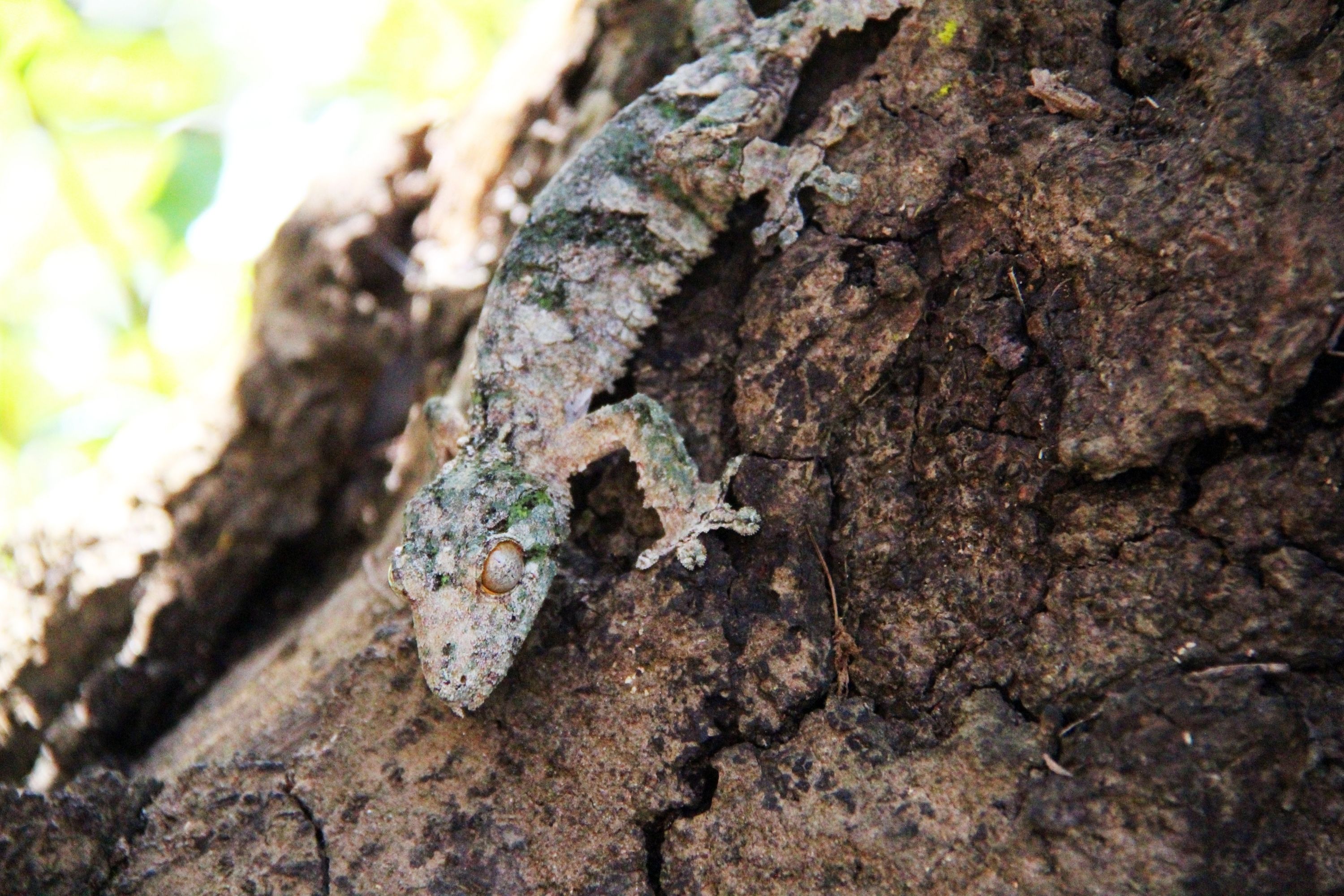Mossy leaf-tailed gecko
(Uroplatus sikorae)

Description
Uroplatus sikorae, commonly referred to as the mossy leaf-tailed gecko or the southern flat-tail gecko, is a species of lizard in the family Gekkonidae. The species is endemic to Madagascar. It is a CITES II protected animal due to habitat loss. Uroplatus sikorae is endemic to Madagascar. These geckos can be found in primary and secondary forests of the Eastern and central tropical forests of Madagascar. The mossy leaf-tailed gecko ranges in size from 15 to 20 centimetres (6 to 8 in) when measured from nose to base of the tail. Their eyes are large and lidless, and have yellow sclera with elliptical pupils, suited for the gecko's nocturnal habits. As with all Uroplatus geckos, the tail is dorso-ventrally flattened. U. sikorae has coloration developed as camouflage, most being grayish brown to black or greenish brown with various markings meant to resemble tree bark, down to the lichens and moss found on the bark. U. sikorae has flaps of skin, running the length of its body, head and limbs, known as the dermal flap, which it can lay against the tree during the day, scattering shadows, and making its outline practically invisible. Additionally, the gecko has a limited ability to alter its skin colour to match its surroundings. Mossy leaf-tailed geckos are nocturnal and arboreal. These geckos rely on their natural camouflage as they dwell among the trees. They spend most of the daylight hours hanging vertically on tree trunks, head down, resting. During the night, they will venture from their daylight resting spots, and go off in search of prey. It has the ability to change its skin color to match its surroundings and possesses dermal flaps which break up its outline when at rest. Mossy leaf-tailed geckos are insectivores eating insects, arthropods, and gastropods. The mossy leaf-tailed gecko is uncommon in captivity and often kept in breeding pairs or trios. They eat a variety of appropriately sized insects including crickets and moths. If breeding is successful in captivity, eggs will be laid every 30 days and take 90 days to hatch. Habitat destruction and deforestation in Madagascar is the primary threat to this animal's future as well as collection for the pet trade. The World Wide Fund for Nature (WWF) lists all of the Uroplatus species on their "Top ten most wanted species list" of animals threatened by illegal wildlife trade, because of them "being captured and sold at alarming rates for the international pet trade".
Taxonomic tree:







